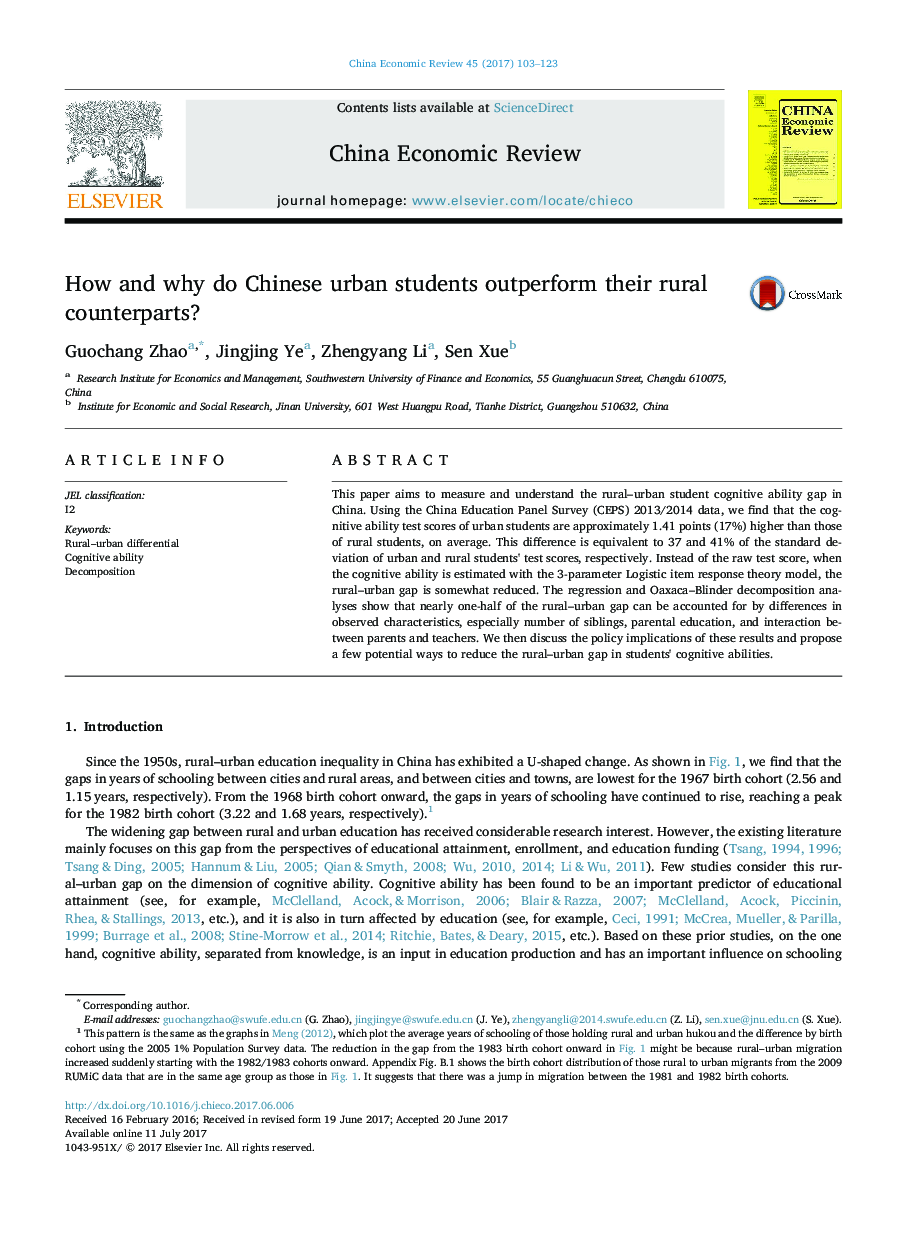| Article ID | Journal | Published Year | Pages | File Type |
|---|---|---|---|---|
| 5047221 | China Economic Review | 2017 | 21 Pages |
â¢We measure and analyze the rural-urban gap in student cognitive ability in China.â¢A nationally representative school-based survey data set is used, which includes a standard and internationally comparable cognitive ability test.â¢A regression and decomposition analyses are used to identify main factors affecting the rural-urban gap.â¢The difference in observed factors can account for nearly one-half of the rural-urban student cognitive ability gap approximately.â¢We discuss the potential ways to narrow the rural-urban gap.
This paper aims to measure and understand the rural-urban student cognitive ability gap in China. Using the China Education Panel Survey (CEPS) 2013/2014 data, we find that the cognitive ability test scores of urban students are approximately 1.41 points (17%) higher than those of rural students, on average. This difference is equivalent to 37 and 41% of the standard deviation of urban and rural students' test scores, respectively. Instead of the raw test score, when the cognitive ability is estimated with the 3-parameter Logistic item response theory model, the rural-urban gap is somewhat reduced. The regression and Oaxaca-Blinder decomposition analyses show that nearly one-half of the rural-urban gap can be accounted for by differences in observed characteristics, especially number of siblings, parental education, and interaction between parents and teachers. We then discuss the policy implications of these results and propose a few potential ways to reduce the rural-urban gap in students' cognitive abilities.
